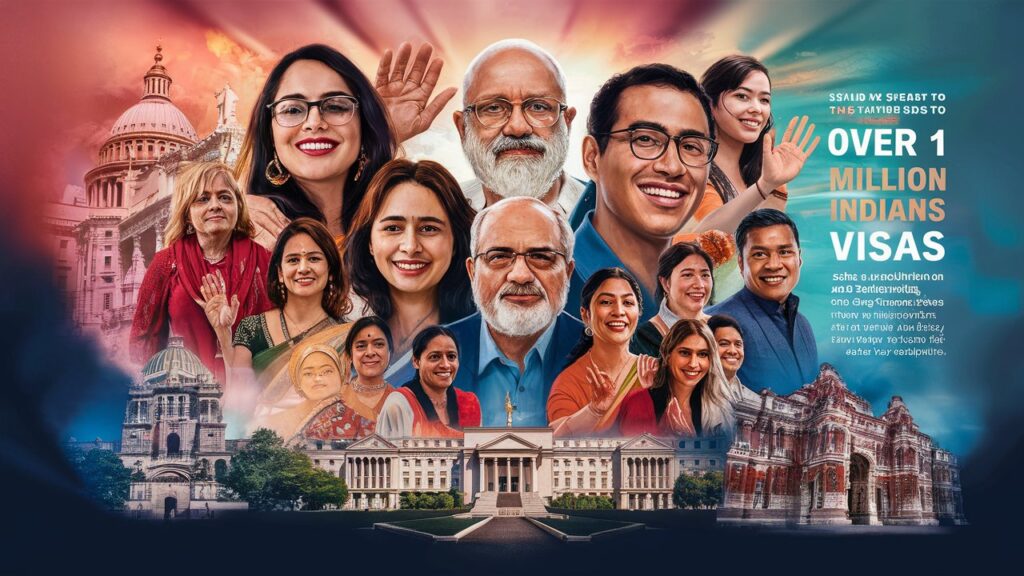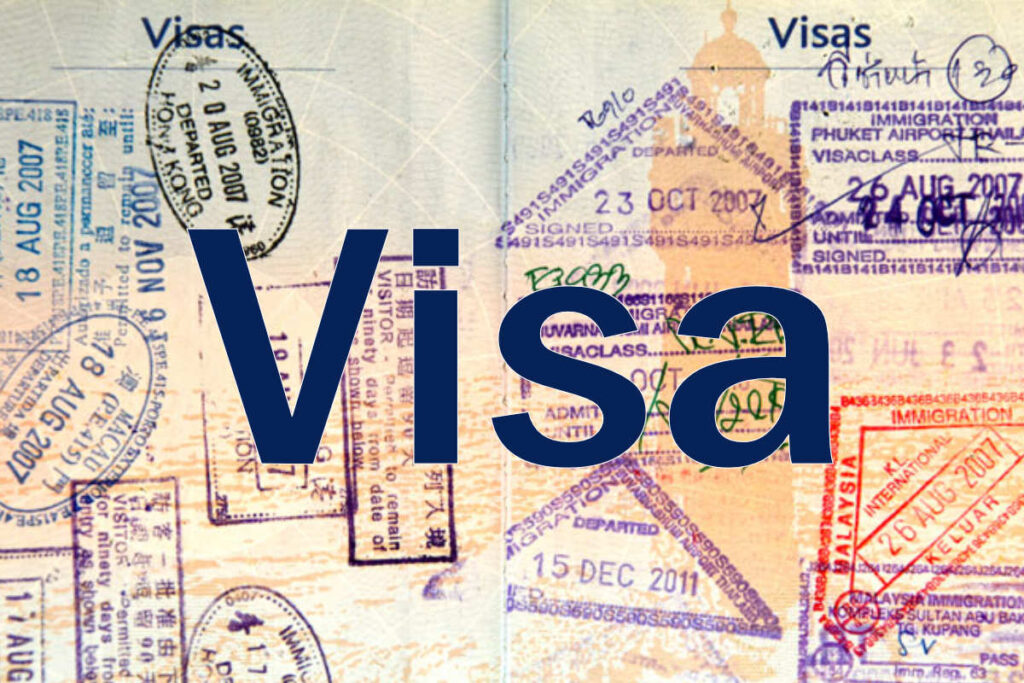In recent years, the United States has continued to be a popular destination for Indians seeking various types of visas, including work, study, and family reunification visas. As per recent data and trends, it is projected that the US will issue more than 1 million visas to Indians in the current year. This significant number reflects the diverse reasons and opportunities that draw Indians to the United States.
Understanding Visa Categories and Trends
1. H-1B Visa Program
The H-1B visa remains one of the most sought-after visas for skilled Indian professionals looking to work in the US. Key points include:
- Occupational Specialty: Requires applicants to be employed in specialty occupations that typically require a bachelor’s degree or higher.
- Employer Sponsorship: Applicants must have a job offer from a US employer willing to sponsor their visa.
- Duration: Initially granted for up to three years, extendable to a maximum of six years.
2. Student Visas (F-1 Visa)
Indian students constitute a significant portion of visa recipients under the F-1 visa category, which allows for academic study in the US. Highlights include:
- Academic Institutions: Indian students enroll in a wide range of accredited US universities and colleges.
- Duration: Valid for the duration of the academic program, with optional practical training (OPT) opportunities post-graduation.
3. Visitor Visas (B-1/B-2 Visa)
Visitor visas are issued for tourism, medical treatment, or business purposes. Important details include:
- Purpose: Temporary visits for pleasure, medical treatment, or business meetings.
- Duration: Typically issued for six months, with possible extensions in certain circumstances.
4. Green Cards (Permanent Residence)
Green cards, or permanent residency visas, are granted to individuals who qualify based on employment, family ties, or through refugee or asylum status. This pathway allows individuals to live and work permanently in the US.
Factors Influencing Visa Issuance
1. Economic Opportunities
The United States offers diverse economic opportunities across industries, attracting skilled professionals from India seeking career advancement and higher wages.
2. Educational Excellence
US universities are renowned for their quality of education and research opportunities, attracting Indian students pursuing higher education in various fields.
3. Family Reunification
Many Indians seek family-based visas to reunite with relatives already living in the US, contributing to the overall visa issuance numbers.
4. Business and Investment
Investors and entrepreneurs from India explore business opportunities and investment prospects in the US, utilizing visa categories such as the E-2 visa for treaty investors.
Challenges and Considerations
1. Visa Processing Backlogs
Certain visa categories, such as the H-1B visa, may experience processing delays or backlogs due to high demand and limited quotas, affecting applicants’ timelines.
2. Immigration Policy Changes
Changes in US immigration policies, including visa eligibility criteria and processing procedures, can impact the number and types of visas issued to Indians.
3. Legal and Documentation Requirements
Navigating US immigration laws requires applicants to meet specific eligibility criteria and provide extensive documentation to support their visa applications.
Focus on Student Visas
One of the primary areas of focus is student visas. The US has pledged to process all student visa applications for Indian students whose courses begin this fall. This initiative underscores the importance of educational exchanges and the significant contribution of Indian students to American universities. By prioritizing these applications, the US aims to facilitate smoother transitions for students and support their academic ambitions.
Addressing the Backlog
The backlog of visa applications has been a pressing issue, particularly for those seeking B1 (business) and B2 (tourist) visas. These categories have seen a surge in demand as business and leisure travel resumes post-pandemic. The US is actively working to reduce wait times and improve the overall efficiency of the visa issuance process, ensuring that applicants can proceed with their travel plans without undue delays.
Prioritizing H-1B and L Visas
Indian IT professionals have long been significant in the US, contributing to the tech industry and driving innovation. Recognizing this, the US prioritizes H-1B and L visas, which are crucial for skilled workers and intra-company transferees. These visas enable Indian professionals to work in the US, fostering cross-border collaboration and benefiting both economies.

Strengthening Bilateral Relations
The decision to increase visa issuance is not just about numbers; it is a testament to the deepening relationship between India and the US. This move will enhance people-to-people ties, promote cultural exchanges, and bolster economic cooperation. By facilitating more accessible visa access, both countries can benefit from their citizens’ diverse talents and skills.
Economic Implications
The issuance of over one million visas to Indians will have significant economic implications. For the US, it means a steady influx of skilled professionals, students, and tourists, all contributing to the economy in various ways. For India, it provides opportunities for its citizens to gain global exposure, enhance their skills, and bring back valuable experiences.
Cultural Exchange and Diversity
Cultural exchange is a cornerstone of the US-India relationship. By welcoming more Indian nationals, the US enriches its cultural tapestry and promotes diversity. Indian students and professionals bring unique perspectives and ideas, fostering a more inclusive and innovative environment.
Challenges and Solutions
Despite the positive outlook, challenges still need to be solved in managing the high volume of visa applications. The US government is investing in technological upgrades and additional staffing to expedite the process. These measures aim to ensure that the visa issuance system can handle the increased demand efficiently.

Long-Term Impact
The long-term impact of issuing over one million visas to Indians extends beyond immediate economic and cultural benefits. It sets the stage for stronger bilateral cooperation in various fields, including technology, education, and business. As more Indians travel to the US for education and work, they build networks leading to future collaborations and partnerships.
Result
The US’s decision to grant more than one million visas to Indian nationals in 2023 is a historic move that highlights the importance of the bilateral relationship. By addressing the backlog, prioritizing key visa categories, and facilitating smoother processes for students and professionals, the US is demonstrating its commitment to strengthening ties with India. This initiative promises to bring both nations economic, cultural, and social benefits, fostering a deeper and more dynamic partnership.
Conclusion
The United States remains a preferred destination for Indians seeking various visa categories, driven by opportunities in employment, education, and family reunification. With over 1 million visas projected to be issued to Indians this year, the US continues to strengthen its ties with India through mutual economic, educational, and cultural exchanges. Prospective applicants are advised to stay informed about visa policies and seek professional guidance to navigate the complex visa application process effectively. As both countries benefit from the exchange of talent and investment, the issuance of visas underscores the importance of bilateral relations and the contributions of Indian immigrants to the American society and economy.
